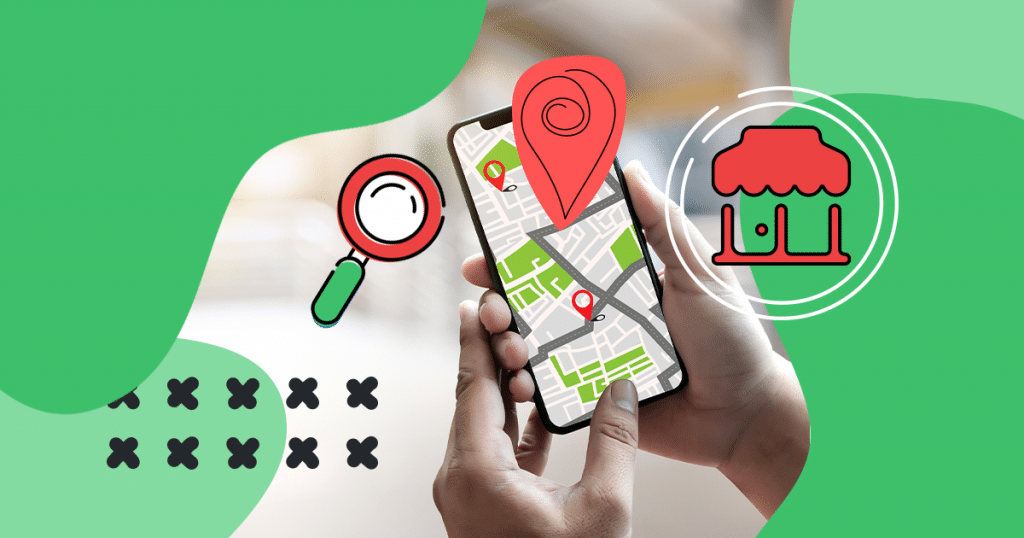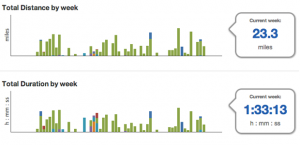The shift from Outbound Marketing to Inbound Marketing changed everything in the marketing game.
Marketers were used to targeting large audiences and creating strategies on a wide scale, and, then, tactics became more personalized and directed at specific buyer personas.
Even with that scenario, a huge number of prospects were still an important indicator.
However, local online marketing approaches came in, and some businesses started to realize that attracting just a few prospects based on where they live could be even more interesting and profitable.
Since then, the Digital Marketing world has turned it into a powerful way of optimizing results and generating brand awareness as well as conversions.
If you’re interested in knowing more about that, check out the following topics!
What is Local Online Marketing?
The Inbound Marketing era brought attention to a new way of thinking: what if brands adapted to what customers already do, which is searching for answers on Google and taking the very first step to knowledge the brand?
Inbound became massive, and marketers all over the world started applying those tactics.
But, then, after a while, you had a whole new world of companies trying to fight for the viewer’s’ attention on the internet.
Big brands have money, so they work even more on personalized ads and segmentation.
And what about small, local ones? They were competing with those big market leaders.
That’s when marketers started to notice the power of local Digital Marketing. They started thinking that a way of winning this battle could be personalization based on region and areas.
So, now we have a definition. Local marketing is a set of tactics focused on a specific group of people that live in a particular place.
That can be a whole state or just a small town. By talking only to those that are nearby, you optimize the chances of getting them forward through the buyer’s journey. It’s a very smart way to deal with big competition.
Now, let’s analyze the customer’s perspective: consider if you as a buyer have the chance to buy a product from a big company that’s miles away from you and also have an opportunity to buy from a small business that’s close to you. By the way, for the sake of this example, both offer good solutions.
The first option is a big brand, sure, but they are farther. Whereas the second option is closer, so in case something unexpected happens with your product, you can easily and quickly get them to look at it.
After all, they’re just a few blocks from you. Since it’s that easy and fast to contact and get solutions, close alternatives are more attractive and reliable.
Sometimes, the user only wants to have a great experience without having to go all the way across the state or the city, for instance. They want to see what’s best around them, and local tactics are about showing them exactly that.
Why is Local Online Marketing important after all?
Ok, but why is this a thing now? What are the most important points to remember when we talk about the effectiveness of local marketing? Let’s find out!
Less waste of time and money
First of all, you avoid waste of both time and money.
After all, your team will work completely focused on a limited set of prospects, investing all the resources and strategies to grab their attention. So it’s way less effort than it would be to target a wide group.
With local marketing, you’re surely getting a funnel with fewer prospects on top. That happens because the brand’s not going for everyone, but only for a small community of users.
Higher ROI and lower CAC
Also, the Return Over Investment (ROI) is higher, and the Customer Acquisition Cost (CAC) is lower.
With local tactics, you talk to people interested in discovering new solutions nearby, so the chances of a successful purchase are huge.
You need less effort, time, and money to bring them into the funnel as well, so the overall cost is smaller.
Brand loyalty
Another topic that has everything to do with ROI is brand loyalty.
Yes, that is such a buzz expression nowadays, and sometimes it feels like it’s way beyond our wildest dreams, but it’s easy to accomplish if you try a local digital marketing strategy.
After buying from you, if everything goes right with the experience, the customer will develop a relationship based on trust and loyalty.
In this case, the lifetime value is higher, as they always come back for more. That’s more likely to happen because you’re also neighbors.
So, it’s not like buying something from someone you don’t know and only have met for commercial reasons. It’s more like purchasing from a person you’re familiar with.
Buzz
Another key point about those tactics is the buzz.
Think about it: if you have a small business delivering great experiences in a tiny neighborhood, users may easily spread that around to bring more customers in, don’t you think?
People like to share the experiences they have, and they also like to recommend places and products to each other. So, going local in a marketing strategy is a way of tapping into word of mouth to improve results.
Local partnership
That is also a great method to develop partnerships with different businesses located in the same area.
If you focus more on the place you live, you will get to know other companies as well. With that bond, it’s easier to improve customer experience, and the sky is the limit for new approaches.
How to implement Local Online Marketing?
Knowing you’re ready to experience the benefits of a solid local online marketing strategy is one thing. Making sure it actually succeeds is another.
Here’s a look at some must-know practices for ensuring everything plays out the way it should.
1. Update the design of your website
First impressions count for a lot in today’s fast-paced digital world, and your website is what’s responsible for making yours.
The experience your users will have once they land there will directly affect your sales margins, so it’s essential to make sure it’s a good one.
Great user experiences start with fluid, streamlined designs.
- Is your site attractive, sleek, professional, and in step with your current brand identity?
- Is it easy for visitors to find what they’re looking for?
- Does the way it’s set up encourage users to stay on the site and keep browsing once they’ve already found what they came for?
Make sure you’re able to answer yes to all these questions.
Today’s consumers have short attention spans, not to mention many different merchants to choose from when it comes to shopping for the things they need.
A bad or confusing website design can and will inspire them to look elsewhere, but a good one just might land you a sale and a new customer.
2. Optimize for local search visibility
When you run a local business, it’s crucial that you optimize your ongoing SEO strategies with local search visibility in mind.
People still use Google when searching for local solutions. However, they word things differently, often adding key phrases like “in [city]” or “near me” to their queries to finetune their SERP results.
They also conduct local searches for a couple of different reasons.
➤ One is to find a quick, relevant solution to an immediately pressing problem.
➤ The other is to scope out their choices and determine which might be the best fit when they are ready to buy in the future, so it’s important to be thorough here.
Start by optimizing your Google My Business listing to ensure your business is among relevant search results and increase your chances of appearing on the SERP as a featured business.
- Fill out your profile completely. Be sure to include operation hours, exact address, and current contact information.
- Add high-quality photos that tell a potential customer a bit about your company, products, and services.
- Keep your profile up to date on an ongoing basis, so visitors always have the latest information.
You’ll want to optimize your website with local SEO in mind, as well.
Update your keyword research efforts to include top local terms and phrases, including long-tail keywords.
Polish the functionality of your website overall, and add pages dedicated specifically to your location where it makes sense to do so. (Make sure to add one entire dedicated page for each location you wish to target.)

3. Make managing customer reviews a priority
Social proof is a decisive factor in how today’s consumers make purchasing choices, especially when buying from a business that’s new or local.
Before they put their money down, they need to know whether a particular company is a good bet, and they do that by looking at reviews left by other customers.
A wealth of glowing reviews from other satisfied customers will naturally work in your favor.
However, even a couple of negative reviews can turn a potential customer off and inspire them to look elsewhere.
But the good news is you have more control over how your reviews make you look than you think, so careful ongoing management is essential.
Always take the time to acknowledge and respond to reviews, both positive and negative.
Address positive reviews by thanking people for their business and for taking the time to provide feedback.
Promptly reach out to negative reviewers, tell them you’d like to make things right, and attempt to resolve their issues.
This shows new potential customers that you run your business professionally and with integrity.
4. Update your pay-per-click (PPC) campaign to target local consumers
Pay-per-click ads may already be a part of your ongoing SEO campaign, but if they’re not, it’s officially time to embrace them.
PPC is ideal for reaching those looking for exactly what your business offers. PPC leads are also significantly more likely to convert than strictly organic leads.
Ranking success is all about choosing the right keywords and long-tail key phrases your potential customers are searching for.
And yes, placing a competitive bid can definitely raise the chances of scoring a high ad ranking.
However, it’s not more important than quality. Google’s algorithms are all about elevating the best of the best, so that’s the place to focus most of your efforts.
Make sure your commitment to quality extends past your ads to your landing page of choice, as well.
The page you choose should focus solely on the product, service, or location you tailored your ad for, the better to convert curious leads into paying customers.
5. Make your website mobile-friendly
Making sure your target audience successfully finds your company and products is only part of what it takes to cultivate a successful local online marketing campaign.
The rest is all about ensuring they have a positive user experience once they land on your website. That means understanding how modern consumers actually use the internet these days.
While plenty of people do still use laptops and full-fledged desktop systems to browse websites that interest them and shop online, more people than you think prefer to do it via mobile devices like smartphones and tablets.
This is especially the case for local customers, as they’re likely to be looking for relevant solutions while they’re already on the go.
That said, make sure your website, landing pages, and web stores are as mobile-friendly as possible. Implement responsive designs that are compatible with a full range of possible devices.
Test the navigability of your site for functionality, as well. Otherwise, you risk losing all those carefully cultivated leads to your competition.
6. Localize your content marketing campaign
Great content that engages audiences and inspires trust is crucial for any online marketing campaign.
However, far too many local businesses leave it out of the equation entirely, counting solely on advertising and word-of-mouth to attract new customers. Don’t make this mistake yourself.
Although some of your potential customers will find you when they’re ready to buy and simply shopping around for the right service provider, others will still be out there looking for an initial solution to their problems.
Creating amazing localized content like blogs, ebooks, infographics, and videos that answer people’s questions is a great way to sell your products and convert leads.
It’s also a way to build brand familiarity and keep people coming back.
Start your content creation campaign by deciding on topics and researching keywords.
- Which topics matter most to the people your company serves?
- What problems are your products designed to solve?
- What questions are your customers likely to be out there asking?
Create high-quality, engaging content to address your customers’ pain points, educate them on their options, and ultimately show why your product is the solution they’ve been looking for.
Next, optimize it for the search engines. Then watch your audience and sales margins grow.
7. Make the most of your social media presence
A well-rounded, expertly cultivated social media presence isn’t just a good idea these days.
It’s an essential part of growing your business and building your brand online, whether your company is local or global. Here’s why.
- Modern consumers prefer to build intimate, lasting relationships with the brands they buy from, so they expect to find and follow them on social media.
- People are increasingly turning to social media when researching services and products they’re thinking of purchasing.
- Existing and potential customers directly engage brands via social media when they have issues, questions, or concerns.
- Social media algorithms are highly efficient at helping your content find its ideal audience.
- Businesses of all types can take advantage of paid and organic ways to tap into new markets and generate potential leads.
In other words, if you’re serious about making the most of your local online marketing efforts, you need to be investing time, effort, and resources into your social media presence.
Start by choosing the right platforms for your business.
Big, expansive options like Facebook and Twitter are great bets for almost any business, as nearly everyone maintains active accounts there.
Instagram is terrific for businesses that leverage visuals to sell their products, and YouTube is the place to be for video.
Meanwhile, LinkedIn is the platform to be for companies specializing in B2B solutions.
Maintain active feeds on your platforms of choice. Fill them with entertaining, informative content your audience will love consuming and sharing.
Engage with followers and customers who attempt to interact with you. It’s the best way to help people get to know and trust your brand, making them that much more likely to choose you when they’re ready to finalize a purchase.
Wrap Up
Local Digital Marketing is all about sending messages to those who are nearby.
You narrow your audience, so you can work focused on bringing them in and turning them into customers. With limited scope, the effort is smaller, whereas the ROI is higher.
And if you are thinking about investing in a local online marketing strategy, it’s really important to understand all the terms in the Digital Marketing ecosystem. Check out our glossary on the main terms and be up to date with your strategy!









